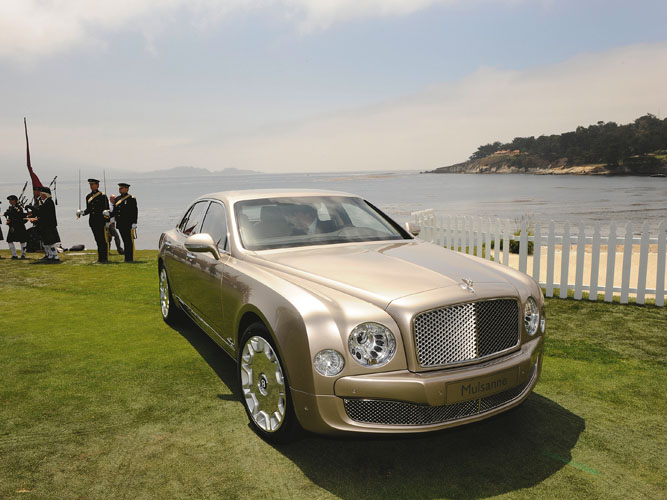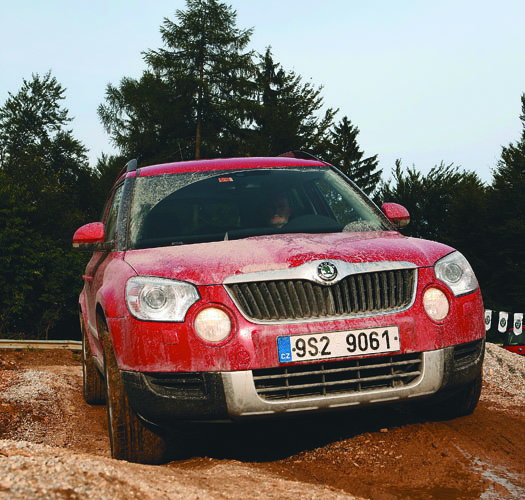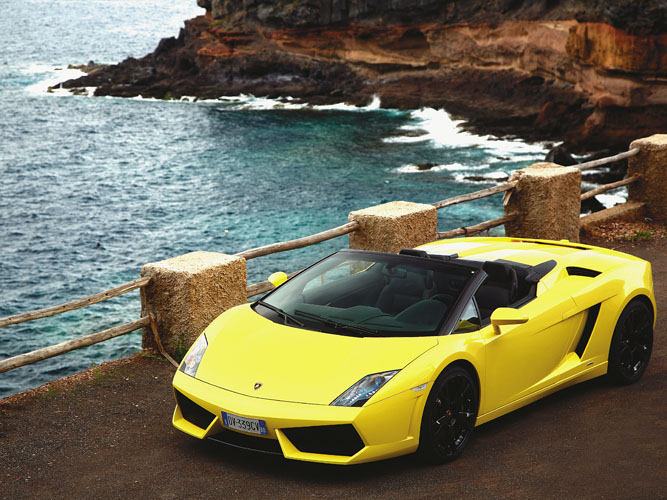
What You'll Drive in 2010
Next year is expected to be the best ever as far as the Indian automotive story is concerned
With every automotive manufacturer posting record sales figures, you wouldn’t believe that just 12 months ago they were buckling over from the proverbial kick in the gonads. Today they are falling over themselves to add fresh capacities and churn out more cars for the insatiable Indian car buyer. The Auto Expo in January will give the clearest indication yet of how big India is set to be on the world’s automotive map. In fact, the Auto Expo is set to rival some of the glitziest auto shows for size and scale, dwarfing the likes of the Tokyo Motor Show and setting the tone for 2010: A year that’s expected to be the best ever as far as the Indian automotive story is concerned. So what will we be driving in 2010?
The people-mover segment will be addressed by two newcomers: Volkswagen’s Touran, a seven-seater MPV (multi-purpose vehicle) that’s being assembled in Indonesia; and Nissan’s NV2000 Vanette, which it will bring in via its joint venture with Ashok Leyland — it has already won some Van of the Year awards and has the USP of sliding rear doors.
Tata Motors too will bring in the IndiCruz. However, before that will be an upgrade to the breathtakingly underdeveloped Sumo Grande that, hopefully, will address issues of quality and styling.
Of greater significance is the emergence of the compact-MPV. VW, Toyota and Nissan will follow up on their hatchbacks with not just a sedan based on the same platform but also create a new segment, the C-MPV. Smaller than the Innova, but with three rows of seats, the C-MPV is suited to Indian needs (and families). In fact, the pioneer in this segment, Maruti — forgotten the Omni and Versa? — will also have a replacement for the Versa, with better styling and a diesel engine.
Hatchbacks
All said and done, India is still a market driven by hatchbacks and 2010 will see the two biggest manufacturers in the world — Toyota and Volkswagen — join the party. First off the blocks will be VW with the all-new Polo that only recently went on sale in Germany. Indian deliveries will start in March as VW goes into overdrive in expanding the dealer network. One of the interesting brand-building activities will be the single-make Polo Cup India race series: 25 Polos, powered by 1.6-litre diesel engines, will race in a six-round championship.
We have driven the Polo on its launch, in Sardinia, Italy, and initial impressions are of a solidly-built car that feels rock-steady at speed and pampers occupants with good ride quality.
The Polo will be built at VW’s new plant at Chakan, near Pune, and on the same lines as the Skoda Fabia. The 1.2-litre three-cylinder petrol is carried over from the Fabia while on the diesel front it will get a brand new 1.2-litre Turbocharged Direct Injection common-rail diesel (which will make its way into the Fabia). In fact, the main challenge VW will face is pricing vis-à-vis the Fabia; Skoda will have to reduce its price to make way for the Polo over it.
Toyota, on the other hand, has been massively hit by the recession. Last year it posted its first loss in 70 years: a staggering $1.7 billion. The only new investment Toyota has committed has been India and at the Auto Expo the wraps will be taken off Toyota’s first small car for India.
Code-named Project EFC, it will be sold in BRIC countries, but India will be the lead market. Engineers have benchmarked it against the Maruti Suzuki Swift. Details are sketchy but Toyota insists the car will not start a price war; instead it will have space and quality to justify its premium. Expected launch is end-2010.
Nissan will also make an entry with the new Micra (to be globally unveiled at the Geneva Motor Show in March). The basic premise of the Micra follows a simple and logical chain: A lightweight car will provide better efficiency which means it will need a smaller fuel tank which in turn leads to better packaging and a comfortable and spacious interior.
Further headaches for established players in this segment — Maruti, Hyundai and Tata Motors — will come courtesy of two price warriors: The Ford Figo and Chevrolet Beat. The Figo is based on the current Ikon/Fiesta/Fusion platform (which will give the car a great cost advantage) but with better space efficiency and improved ride and handling.
GM’s Indian dealers will have a lot to cheer about with Beat, the next generation Spark/Matiz developed by the erstwhile Daewoo in South Korea, sporting aggressive styling and much better interiors. However, in the best Maruti-inspired tradition, the Beat will not replace the current Spark. Instead, the Spark will get a smaller 800cc engine and prices will be chopped to slot in below the Alto, taking the price excruciatingly close to the Nano! The Spark will also have an electric variant, jointly developed with Reva.
Luxury Cars
But if this baby is too cheap for you, Bentley will happily relieve you of Rs. 4 crore (more if you go mad with the options list) for the Mulsanne. It’s Bentley’s Rolls-Royce Phantom rival and they justify the price with two words: “hand made.” As you’d expect, it lacks for absolutely nothing, not in the engine department (it’s got a monumental 6.75 litre V8, hand-assembled), not in the interiors (everything is bespoke and hand-made), not in the body (again finished by hand and polished to mirror sheen). It’s the gold standard if you’re being chauffer-driven.
But if you’re one to take the wheel on occasion and attack a few corners, Porsche will only be too pleased to present the new Panamera. It’s Porsche’s first four-door luxury saloon and it really is rather comfortable and beautifully put together. But because it’s a Porsche, those sports genes are very much present; the way it flies down the expressway or attacks corners is, frankly, frightening. How’s this for bending all stereotypes? The Panamera is the first luxury saloon in the world to sport launch control (technology that’s filtered down from Formula 1)!
If you like your cars sporty, but also a touch mainstream, the new BMW 5 Series will do perfectly well for you when it comes to India in July 2010. Its designers have gone all conservative: No controversial elements to stoke endless pub debates. Instead, you get the design genes of the new 7 Series: Clean sides with a tightly pinched shoulder line, and a subtle interplay of light and shadows, a very sophisticated front suspension setup for even better driving dynamics, better engines, an exceedingly handsome cabin and even more space at the rear. Perfect place to see what fellow Forbes India Rich Listers are up to.
D-segment Sedans
The ix35 isn’t the only expensive Hyundai you’ll be able to buy. Early in the year, there’ll be an all-new Sonata. ‘All-new’ really means all-new: The styling is radical and overflowing with design flourishes, unlike anything sporting the Hyundai badge; interiors too are upgraded with better quality; better petrol and diesel engines; and, they claim, this Sonata can go round corners with some authority. A rather fetching proposition, provided you can get over the lack of snob value around that Hyundai badge.
The Sonata will have two new rivals, the new Lancer from Mitsubishi and the Kizashi from Maruti. Both have a huge task ahead of themselves; nobody buys expensive Marutis (forget the Grand Vitara, even the SX4 isn’t doing well), and, bar a handful of SUV enthusiasts, nobody buys Mitsubishis at any price. Building their brand in a segment dominated by established players like Honda, Toyota and Skoda will be a tough ask.
It’s a problem that Volkswagen will not face, now that every media channel is being bombarded with VW advertising. No, the problem the new Passat and new Jetta will face when they come next year is of a weak dealer network. And the premium every VW demands over a Skoda.
Sports Utility VehiclesIndia loves SUVs; they’ve sold well in India in all sizes, shapes and prices. The action is only going to get hotter with Skoda’s Yeti, a soft-roader that combines the best Skoda attributes — impeccable quality, premium feel, excellent engines and superior dynamics — with a high SUV-ish seating position, increased ground clearance and, if you’re willing to splurge, four-wheel-drive. Pricing will be the key issue, and anything in excess of Rs. 12 lakh could dampen sales. The cutesy styling could be its biggest trump card (there is nothing as well-styled at this price) or its biggest drawback (doesn’t look macho and intimidating like SUVs ought to).
Ditto for the BMW X1, a scaled down X3 that has absolutely no off-road pretensions. A good thing that; when was the last time you saw a Rs. 25 lakh SUV being off-roaded? And Audi will follow the same logic by shrinking the Q5 and giving us the Q3.
Land Rover will open more showrooms and make its entire range of acclaimed SUVs — Discover 4, Freelander 2, Range Rover and Range Rover Sport — available to Forbes India readers across the country. Hyundai too will try to horn in, with the ix35, while the Santa Fe is also under evaluation. Their only stumbling block: Hyundai is now firmly perceived as a hatchback company, which means the affluent won’t spend big money on the brand here.
Green Cars
For obvious pricing- and infrastructure-related issues, electric cars haven’t been a success in India. Reva is more famous, and sells more cars, in Europe than it does in India. The next-generation Revas — the NXG and NXR — won’t change that, but with their improved styling (no longer looking like something Herbert would drive down Sesame Street), packaging (four might just about fit in) and range, and the noises the government is making about reducing taxes and duties on eco-friendly vehicles, we might just see more Revas on the road.
Also hoping for excise duty breaks is Toyota, now that they’re all geared to launch the Prius hybrid in India. This is the third generation of the world’s most popular hybrid (as plugged by several Hollywood A-listers) and will be India’s second hybrid car after the Honda Civic Hybrid. It uses a highly efficient petrol engine mated to an electric motor that cuts emissions and fuel consumption. It’s a step in the green direction, but with the current duty structure the Prius will be priced well above Rs. 25 lakh.
Supercars
India now has a Forbes Rich List; by extension, we ought to have a Ferrari showroom. That will come next year. Ferrari has been mulling over an Indian launch for some time now and their discussions with their Indian partners, Tata Motors, are in the final stages, paving the way for the prancing horse to gallop into India. The entire Ferrari range will be sold here: the 612 Scaglietti (two of which were driven around the country two years ago to introduce India to Ferrari), the 599 GTB Fiorano (one of the best grand touring cars money can buy), the California (the softest car in the range with a folding hard top, very popular with women) and the 458 Italia that’s just been launched. The Italia is arguably the most desirable supercar on the planet, mating jaw-dropping styling with neck-snapping performance. The Ferrari badge just adds to the aura.
Topless will be the way forward for supercars next year; both the Lamborghini Gallardo and Audi R8 will loose their tops and become even more desirable (not to mention adding another zero to the asking price). Audi will also bring in the V10-engined R8 next year, on the back of exceedingly good response to last year’s V8-engined R8. So the next time somebody mentions the recession do point him in the direction of the nearest Ferrari, Lamborghini, Audi or Bentley showroom.
Sports Cars
Not everybody likes lounging in the back. Many are taking a fancy to sports cars: The ideal Saturday night car to go to the pub. Roof down, of course. BMW’s just-launched Z4 roadster features a folding hard top whose very operation will have girls piling into the car (it’s a two-seater so you can only go home with one). Nissan will bring in the legendary 370Z as part of its brand building exercise. Mitsubishi will have the rally-bred Lancer Evolution X (which will plaster smiles on millions of rally enthusiasts’ faces). And Mercedes will launch the barking mad E63 AMG, a car that when given a boot full of throttle sounds like God clearing his throat.
(This story appears in the 18 December, 2009 issue of Forbes India. To visit our Archives, click here.)
-
 Priya
PriyaUnderstanding the Indian car market is crucial for VW to make inroads into it. For each of its models (Qualis, Innova and Corolla), Toyota has managed to give a very clear positioning and USP. Fiat, despite its distinctly superior styling has failed to achieve the volumes necessary to succeed in the Indian market. <br /> <br /> One hopes that VW, with its investments in the Chakan manufacturing facility to recover, will put more thought into its engine performance-price combination to drive the volumes in the first 2 years itself. <br /> The Fabia's 3-cylinder petrol engine has earned the reputation of being both noisy and less fuel efficient. Despite the build quality and comfortable, spacious interiors, the car has not sold as many as it could have. The market will favor a car that can deliver the fuel economy of a Maruti Swift, the suspension of a GM car, the responsiveness of Ritz and the driver comfort of a Fabia. Hope that the Polo does not suffer the same fate as the Fabia because of carrying over the same engine for the petrol version.
on Dec 17, 2009

















